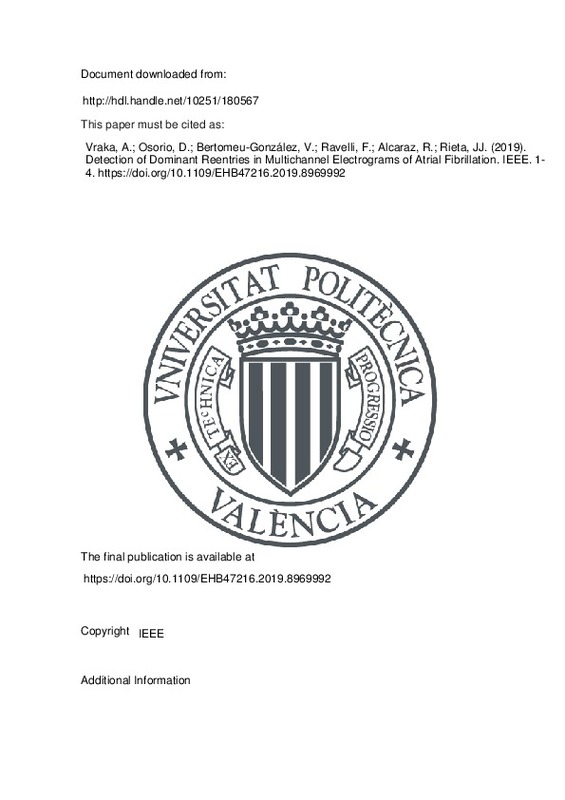JavaScript is disabled for your browser. Some features of this site may not work without it.
Buscar en RiuNet
Listar
Mi cuenta
Estadísticas
Ayuda RiuNet
Admin. UPV
Detection of Dominant Reentries in Multichannel Electrograms of Atrial Fibrillation
Mostrar el registro completo del ítem
Vraka, A.; Osorio, D.; Bertomeu-González, V.; Ravelli, F.; Alcaraz, R.; Rieta, JJ. (2019). Detection of Dominant Reentries in Multichannel Electrograms of Atrial Fibrillation. IEEE. 1-4. https://doi.org/10.1109/EHB47216.2019.8969992
Por favor, use este identificador para citar o enlazar este ítem: http://hdl.handle.net/10251/180567
Ficheros en el ítem
Metadatos del ítem
| Título: | Detection of Dominant Reentries in Multichannel Electrograms of Atrial Fibrillation | |
| Autor: | Osorio, Diego Bertomeu-González, Vicente Ravelli, Flavia Alcaraz, Raúl | |
| Entidad UPV: |
|
|
| Fecha difusión: |
|
|
| Resumen: |
[EN] Algorithms developed so far for the detection of local activation waves (LAWs) in electrograms (EGMs) of atrial fibrillation (AF) analyze each channel of the catheter separately, while dominant reentries of AF are ...[+]
|
|
| Palabras clave: |
|
|
| Derechos de uso: | Reserva de todos los derechos | |
| ISBN: |
|
|
| Fuente: |
|
|
| DOI: |
|
|
| Editorial: |
|
|
| Versión del editor: | https://doi.org/10.1109/EHB47216.2019.8969992 | |
| Título del congreso: |
|
|
| Lugar del congreso: |
|
|
| Fecha congreso: |
|
|
| Código del Proyecto: |
|
|
| Agradecimientos: |
|
|
| Tipo: |
|







![[Cerrado]](/themes/UPV/images/candado.png)


